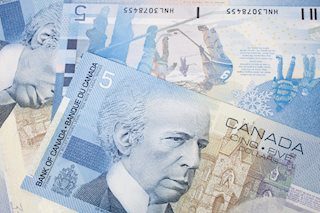USD/CAD stalls below 1.3850 with downside attempts limited
|
- The Dollar remains capped below 1.3850 with the upside bias intact.
- A moderate rebound in Oil prices has given some support to the CAD earlier today.
- USD/CAD remains bullish, with the support area above 1.3800 holding bears for now.
US Dollar’s rally remains capped below 1.3850. The pair failed to break that level on its latest attempt on Monday and is trimming gains during the European session, yet with downside attempts looking weak so far.
The Canadian Dollar has drawn some support from a previous rebound in Crude prices, triggered by escalating tensions in the Middle East. Israel has launched strikes in Lebanon as a response to a deadly attack from the Hizbullah on the weekend. This might inflame an already unsteady region and threaten the Oil supply.
On the other hand, the Fed is meeting this week, with the market expecting a dovish turn on the bank’s rhetoric, which might increase negative pressure on the USD.
Dara released last week revealed that PCE inflation remained steady in June. The headline figure showed a 2.5% yearly increase, with the core PCE at 2.6%. These levels are close to the bank’s 2% target and confirm that inflation is gradually cooling, which keeps hopes of Fed easing alive.
The technical picture remains bullish, with downside attempts capped at the 1.3800-1.3820 area. Below there, 1.3750 would be the next target. Immediate resistance is at 1.3850 followed by the November 2023 high, at 1.3900.
WTI Oil FAQs
WTI Oil is a type of Crude Oil sold on international markets. The WTI stands for West Texas Intermediate, one of three major types including Brent and Dubai Crude. WTI is also referred to as “light” and “sweet” because of its relatively low gravity and sulfur content respectively. It is considered a high quality Oil that is easily refined. It is sourced in the United States and distributed via the Cushing hub, which is considered “The Pipeline Crossroads of the World”. It is a benchmark for the Oil market and WTI price is frequently quoted in the media.
Like all assets, supply and demand are the key drivers of WTI Oil price. As such, global growth can be a driver of increased demand and vice versa for weak global growth. Political instability, wars, and sanctions can disrupt supply and impact prices. The decisions of OPEC, a group of major Oil-producing countries, is another key driver of price. The value of the US Dollar influences the price of WTI Crude Oil, since Oil is predominantly traded in US Dollars, thus a weaker US Dollar can make Oil more affordable and vice versa.
The weekly Oil inventory reports published by the American Petroleum Institute (API) and the Energy Information Agency (EIA) impact the price of WTI Oil. Changes in inventories reflect fluctuating supply and demand. If the data shows a drop in inventories it can indicate increased demand, pushing up Oil price. Higher inventories can reflect increased supply, pushing down prices. API’s report is published every Tuesday and EIA’s the day after. Their results are usually similar, falling within 1% of each other 75% of the time. The EIA data is considered more reliable, since it is a government agency.
OPEC (Organization of the Petroleum Exporting Countries) is a group of 13 Oil-producing nations who collectively decide production quotas for member countries at twice-yearly meetings. Their decisions often impact WTI Oil prices. When OPEC decides to lower quotas, it can tighten supply, pushing up Oil prices. When OPEC increases production, it has the opposite effect. OPEC+ refers to an expanded group that includes ten extra non-OPEC members, the most notable of which is Russia.
Information on these pages contains forward-looking statements that involve risks and uncertainties. Markets and instruments profiled on this page are for informational purposes only and should not in any way come across as a recommendation to buy or sell in these assets. You should do your own thorough research before making any investment decisions. FXStreet does not in any way guarantee that this information is free from mistakes, errors, or material misstatements. It also does not guarantee that this information is of a timely nature. Investing in Open Markets involves a great deal of risk, including the loss of all or a portion of your investment, as well as emotional distress. All risks, losses and costs associated with investing, including total loss of principal, are your responsibility. The views and opinions expressed in this article are those of the authors and do not necessarily reflect the official policy or position of FXStreet nor its advertisers.


